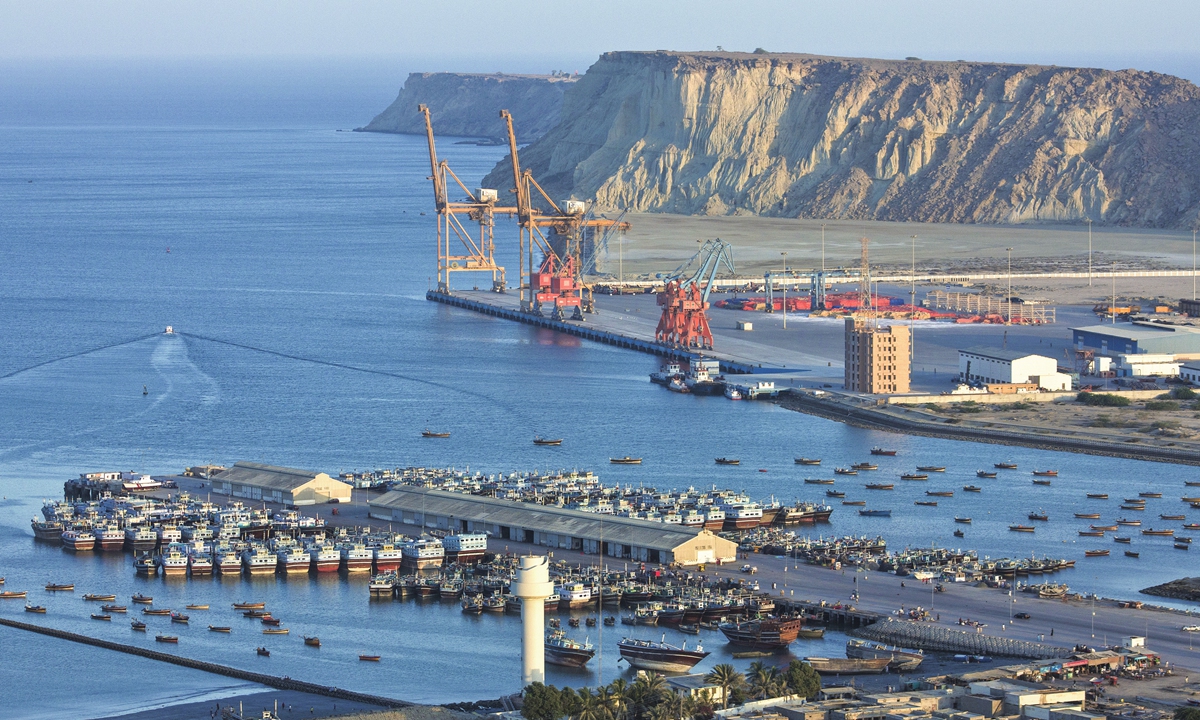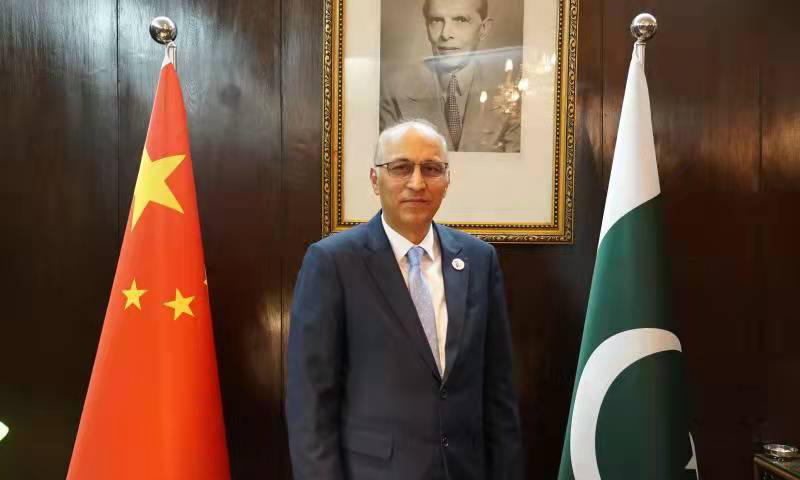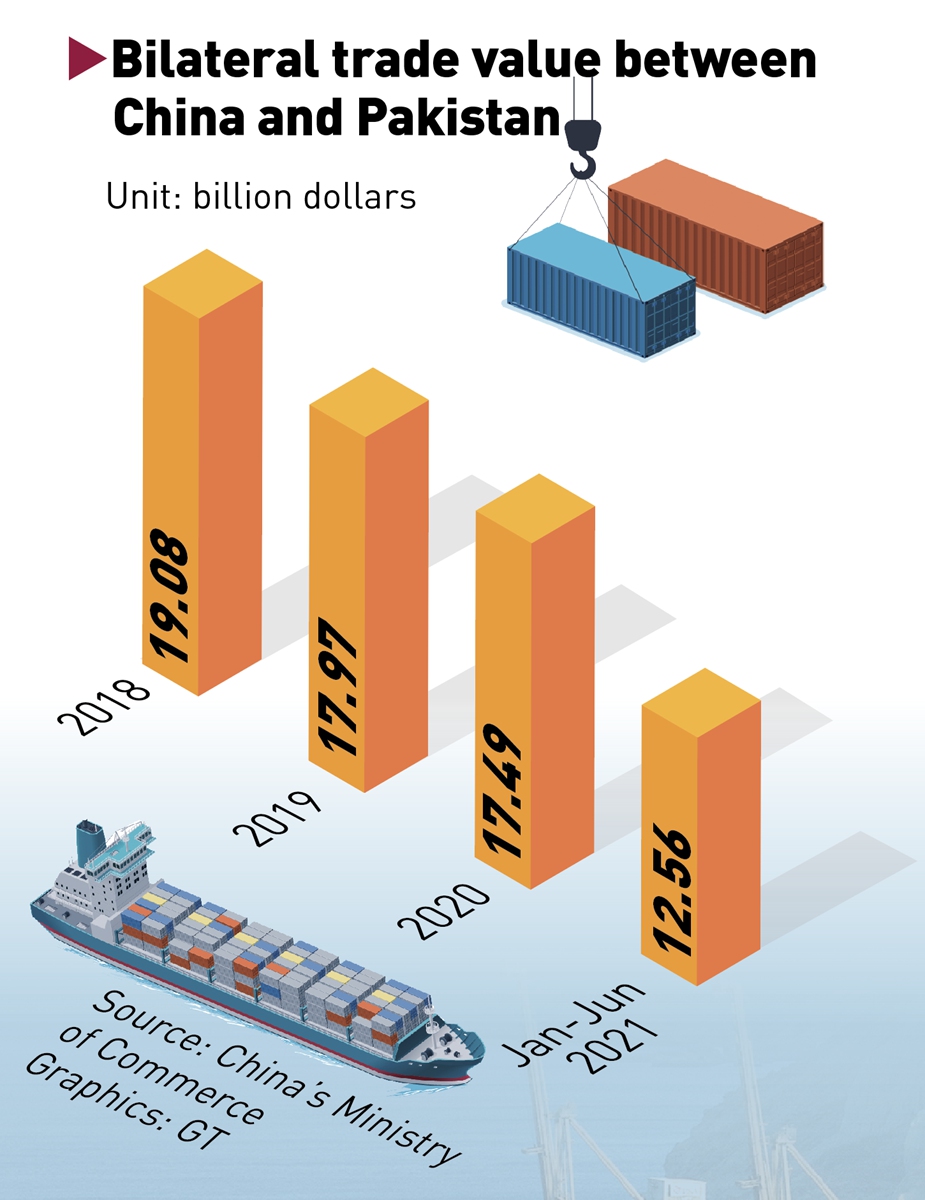
A view of the Gwadar port of Pakistan Photo: VCG
Editor's Note:Conceived in 2013, the China-Pakistan Economic Corridor (CPEC) enters its ninth year in 2022. In an exclusive interview, The Global Times' reporter Chu Daye spoke with Pakistan Ambassador to China Moin ul Haque, recapping the development of the CPEC over recent years and delving into the latest progress regarding third-party cooperation and a plan for phase-two development of the CPEC.

Pakistan Ambassador to China Moin ul Haque Photo: Courtesy of the Embassy of Pakistan in China
GT: The first brick of the CPEC was laid in 2013, it has been nine years, can you comment on the current status of CPEC construction efforts? Tackling the energy shortage was frequently mentioned in the earlier years of the CPEC, how is the situation now?
Haque: The CPEC marks a new phase in Pakistan-China relations by placing economic cooperation and connectivity at the center of bilateral agenda. Being the flagship project of the Belt and Road Initiative (BRI), it aims to enhance connectivity and trade linkages between Pakistan, China and the region through a network of roads, rail, fiber optic, energy pipelines, industrial clusters and Special Economic Zones.
In its first phase, the CPEC has helped us develop major infrastructure and address our essential energy needs. The energy projects which have already been completed include 1,320 megaWatt (MW) capacity coal-fired power plants in Sahiwal (Punjab), Port Qasim (Karachi) and Hub (Balochistan); 660MW Engro Thar coal power project; 1,000MW Quaid-e-Azam Solar Park in Bahawalpur (400MW project is complete while 600MW is under-implementation), and some smaller wind & solar energy projects. A mega, 878-kilometer long, Matiari to Lahore ±660 KV HVDC Transmission Line project has also been completed with the capacity to evacuate 4,000 MW electricity.
It has also upgraded Pakistan's national and international highway network to provide more reliable Pakistan-China connectivity across the Karakoram Mountains and smoother inland communications. The CPEC investment and its spin-off effects have also generated thousands of jobs.
GT: How do you see the current challenges and opportunities facing the CPEC in 2022? What's there to be built in the second phase?
Haque: It is a matter of great satisfaction that despite the challenges posed by COVID-19 pandemic in the last two years, the CPEC cooperation and work on all projects continued unhindered. The recently held 10th meeting of the Joint Cooperation Committee reviewed wide-ranging cooperation under the CPEC framework and identified more areas of cooperation including establishment of a Joint Working Group on Information Technology and Industry, which is expected to support high-quality development of the CPEC as envisioned by the leadership of the two countries.
While the first phase of CPEC was mainly focused on infrastructure and energy projects to cater to the immediate needs, the high-quality CPEC phase-II is much broader in scope and focuses on industrial relocation, agricultural modernization, science and technology cooperation, job creation and our people's socio-economic well-being. We are also making rapid progress on the development of the Gwadar Port and Free Trade Zone, which would promote regional connectivity and economic integration.
GT: What is the current level of third-party participation in the construction of the CPEC?
Haque: As the CPEC aims to promote regional integration and win-win cooperation, Pakistan and China have agreed to welcome and encourage high-quality investments and introduction of advanced technologies and expertise in the CPEC from third-party partners who are ready to work with us for common development.
The two countries are jointly working to finalize a mechanism for third-party cooperation under the CPEC framework before formally processing such requests.

Graphics: GT
GT: Regional cooperation is a key word for 2022 and BRI construction is also progressing rapidly. How do you see Pakistan's and CPEC's role in this direction?
Haque: Pakistan is one of the earliest supporters and participants of the BRI. We emphatically endorse the spirit and philosophy of the BRI, which seeks to transcend national boundaries and lay bridges for a win-win cooperation and closer economic integration for a shared future.
The CPEC is not only benefiting Pakistan and China but with objectives of regional connectivity and trans-border trade, it is also having positive impact on regional countries like Iran, Afghanistan and Central Asian countries. China and Pakistan have shown willingness to extend the CPEC to Afghanistan. Recently, trade consignments destined for Afghanistan were cleared from Gwadar Port. Under the leadership of Prime Minister Imran Khan, Pakistan has transformed its policy from geopolitics to geo-economics, and we endeavor to promote trade, transit, and energy flows as well as people-to-people exchanges in the region to create a well-connected, integrated region of shared destiny, harmony and development. The CPEC would be playing a key role to achieve this vision.






